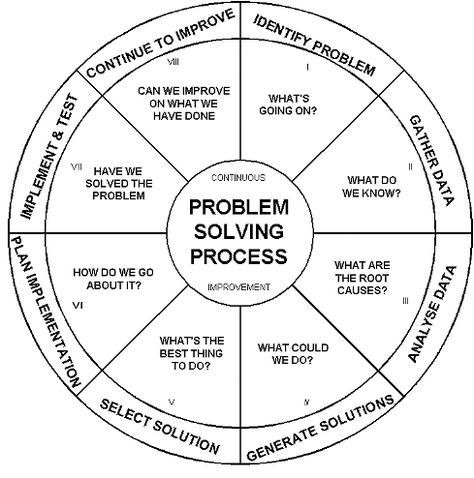We will read the scriptures literally as we connect the dots.
Moses’ mother was a Levite, Jochebed (Yo'Cheved, Numbers 26:59), which means, "Yahweh’s honour" or “Yahweh is glory” (NOBSE Study Bible Name List&Jones' Dictionary of Old Testament Proper Names).
At the age of 40, he fled to Midian where he lived for 40 years (Exodus 2:11-15).
His actual name was "Reu-El/Ragu-El," (Exodus 2:18) which means "friend of the Divine."
Amram was the son of Kohath, who was a son of Levi.
By making a Midrash that Miriam was Puah the midwife, Miriam becomes a much greater figure. She & Yo’Cheved assume the status of the mothers of the entire Israelites."
Three months after Yo’Cheved had given birth to the child, the matter became known to the palace, & so she acted quickly before the officers arrived.
his sister named him Jered because she descended to him at the river in order to learn his fate; Aaron named him Avi Zanoah because ‘my father abandoned my mother and then returned to her due to this (one)’;
Qahat his grandfather named him Avi Gedor because it was due to him that God repaired a breach in (the security of) Israel, for the Egyptians would no longer cast their male infants into the Nile;
his nanny named him Avi Soco because a deity concealed him in thatch-work from the enmity of the Egyptians (all of these names emanate from 1 Chron 4:18); and Israel named him Shemayah ben Natanel for it was in his time that God hearkened to their groans.
When he (Moses) was three years old, Pharaoh was seated at his table ready to eat." –
religiousstudies.uncc.edu/jcreeves/chron…
i.(a) Bithiyah (ancient Egyptian) - her name means, “daughter of the pre-Israelite name of Yah/IAO” according to the Talmud & Christian Concordances. ‘Bat-Yah,’ Daughter or house of the deity
i (b) Yo’Cheved (Hebrew) - her name means, “Glory of the pre-Israelite name of Yah/IAO.” Also known as ‘Shifrah.’ Before they knew the deity as YAHOVAH, the Hebrews worshipped the Canaanite deities, the male Baal & the female, Ashtoreth (Joshua 24:2 & Exodus 6:3, 6-7).
ii.(a) Bithiyah (ancient Egyptian) - she was the Princess of the Royal Pharonic House
ii (b) Yo’Cheved (Hebrew) - she was of Royalty of Israel through Levi (the later priesthood)
iii (a) Bithiyah (ancient Egyptian) - Born in Egypt
iii (b) Yo’Cheved (Hebrew) - Born in Egypt
iv (a) Bithiyah (ancient Egyptian)- she was the adopted mother of Moses
iii (b) Yo’Cheved (Hebrew) - she was the birth mother of the mythical Moses
v (a) Bithiyah (ancient Egyptian) - she pulled Moses out of water
v (b) Yo’Cheved (Hebrew) - she put the mythical Moses in water
vi (a) Bithiyah (ancient Egyptian) - later married to Mered/Caleb, the son of Ezrah of the tribe of Judah (1 Chronicles 4:18). 'Caleb is also called (I Chronicles 4:5) "Ashhur," because his face became black.
vi (b) Yo’Cheved (Hebrew) - married to Amram a Levite & Levites were initiates of Egyptian Temple Greater Mysteries. Amram might mean, "high people, or people exalted."
Amram was the son of the union between Ankhenaten & Kiya.
vii (a) Bithiyah (ancient Egyptian) - her daughter was Miriam (I Chronicles 4:18), which in Egyptian is Merari, which means lovely or beloved.
vi (b) Yo’Cheved (Hebrew) - her daughter was Miriam (Mary in English, Maria/Mariam in Greek), a Levite also married to Caleb (Joshua 14:6), which was an abomination.
vii (a) Bithiyah (ancient Egyptian) -possibly from the House of Imram/Amram, who was the son of the union between Ankhenaten&Kiya, acacialand.com/josephs.html
vii (b) Yo’Cheved (Hebrew) - from the House of Imram/Amram, who was the son of the union between Ankhenaten&Kiya
vii (a) Bithiyah (ancient Egyptian) - identified as Princess MeriAten (meaning, “beloved of Aten”), daughter of Akhenaton (Amenhotep IV), whose parents were Amenhotep III & Tiye.
vii (b) Yo’Cheved (Hebrew)-identified as Shiprah, whose name means beautiful or "to glisten or make fair or goodly"
viii (a) Bithiyah (ancient Egyptian) - saved Moses' life after she located him by the river (Exodus 2:6) & asked a nurse to look after him (Exodus 2:9).
viii (b) Yo’Cheved (Hebrew) - saved the mythical Moses life as Shifrah&Yocheved by giving birth to him (Exodus 2:2) hiding him (Exodus 2:2) & later nursing him (Exodus 2:8).
In another thread, Canaanites will be proved to be Africans & a tributary of Egyptians.
This provides the clear evidence that Bithiyah, the Pharaoh’s daughter, is the same person as Yo’Cheved, Moses’ mother.
1.4 “My mother, an enitum (anutum), conceived me; in secret she bore me,
1.5 She set me in a basket of rushes, with bitumen she seated my lid,
1.7 The river bore me up and carried me to Akki, the drawer of water.
1.8 Akki, the drawer of water, sifted me out as he dipped his bucket.
1.9 Akki, the drawer of water, took me as his son and reared me,
1.11 While was a gardener, {Sun Goddess} Ishtar granted me her ‘ove,
1.12 . . .And for four and years exercised Kingship,
1.13 The black-headed people ruled, I governed, ...”
In ancient times, a word or a name is a human construct. Its a state of mind, story & signpost. A story is a picture carrying a hidden message through ages & it requires considerable effort to discover it.
This is not correct because an Egyptian princess cannot have named the child in Hebrew, whose people were said to be ‘slaves’.
Who was the real #Moses? After connecting the dots, here are the details...
Pharaoh Akhenaton’s son, the young Tut-Ankh-Aton/Tut-Ankh-Amen and the scriptural Joshua, whose mother and wife of Akhenaton was Queen Nefertiti, succeeded him in 1361 BCE.
The deity by the Hebrews, who likewise has no image, is called Adon.
So the ancient Egyptian "Aton/Aten" is equivalent to the Hebrew "Adon".
King Tut was of royal descent, the Son of the deity and was born to govern. He was a ‘Christos,’ meaning the "Anointed One."
Related to this story is the scriptural tale that Moses fled to the Sinai area after he had killed an Egyptian.
As can be noticed, Pharaoh Akhenaton was the #RealMoses!
What did Akhenaton taught that was adopted into Judaism?
Lets proceed, princes&princesses, you the people of royalty.
1. Akhenaton taught that “Aton was the unseen, almighty & everlasting power that made itself manifest in the form of the solar disk in the sky & was the source of all life in sky and earth & the underworld.
The Aaronic priests had a similar procedure. Read, Leviticus 16:3-4.
This gave “Adonai” for "my Lord" as a substitute of Yahweh.
“Moses addresses (the Divine) using the title Adon/Aten (Exodus 4:10,13; 5:22; 34:9; Numbers 14:17; Deuteronomy 3:23; 7:26; 10:17);
This is the origin of Judaic monotheism since Hebrews were earlier polytheistic.
3. From the Aton/Aten, the nameless and hidden deity of ancient Egypt, we have the Hebrew Adon/Adonai.






